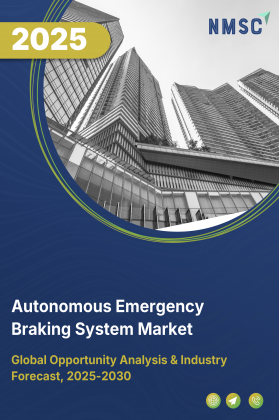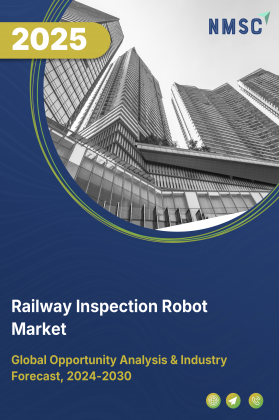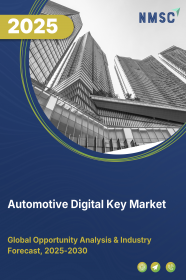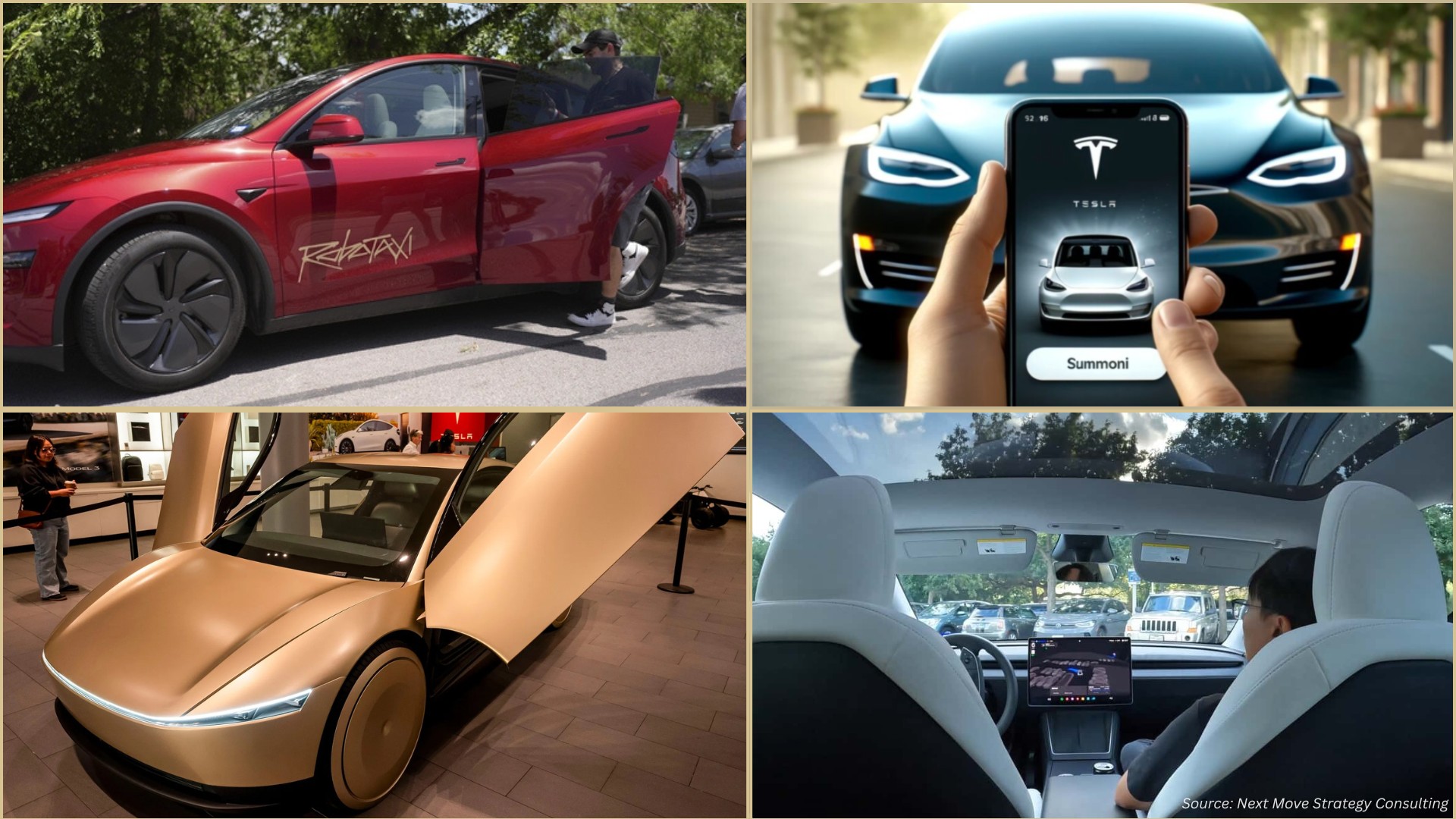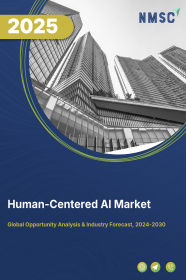
Human-Centered AI Market by Component (Solution and Services), by Technology (Machine Learning, Deep Learning, Natural Language Processing, Image Processing, and Speech Recognition), by Organization Size (Small Businesses, Medium-Sized Businesses, and Large Enterprises), by Deployment (Cloud and On-Premises), and Others – Global Opportunity Analysis and Industry Forecast, 2024-2030
Market Definition
The Human-Centered AI Market size was valued at USD 9.73 billion in 2023 and is predicted to reach USD 36.07 billion by 2030 with a CAGR of 20.6% from 2024 to 2030. Human-Centered AI refers to the design, development, and deployment of artificial intelligence (AI) systems that prioritize the well-being, needs, and preferences of humans. It emphasizes the ethical and responsible use of AI technology to enhance human capabilities, improve quality of life, and promote societal benefit. It involves integrating human values, perspectives, and feedback into the AI development process, ensuring that AI systems are designed to augment human intelligence, decision-making, and interaction rather than replace or overshadow human involvement. This approach aims to foster trust, transparency, fairness, and accountability in AI systems, while mitigating potential risks and biases. Human-Centered AI encompasses a multidisciplinary approach that considers human factors, cognitive psychology, user experience design, ethics, and social impact to create AI solutions that align with human values and goals.
Market Dynamics and Trends
The rising utilization of human-centered AI within the healthcare domain propels the expansion of the human-centered AI market. Healthcare professionals are increasingly embracing this technology to confront chronic illnesses and precisely identify ailments such as bone dislocations, tissue damage, and fractures. Through the integration of human-centered AI into their clinical workflows, professionals are empowered to render more informed treatment choices and elevate surgical accuracy. This trend underscores the pivotal role of healthcare's adoption of human-centered AI, catalyzing the market's growth trajectory.
Moreover, the burgeoning adoption of AI in assistive technologies is a key driver propelling the growth of the human-centered AI market. These AI-powered solutions, ranging from speech recognition systems to smart prosthetics and assistive communication devices, empower individuals with disabilities by providing tailored assistance and support, thereby enhancing accessibility and improving quality of life. By focusing on understanding the unique needs and preferences of users, human-centered AI in assistive technologies delivers customized solutions that adapt and personalize assistance based on user feedback. Moreover, the intuitive interfaces enabled by natural language processing and computer vision technologies enhance user experience and satisfaction, driving continuous innovation in the field. As AI-powered assistive technologies become more integrated into daily life and offer broader market opportunities, the demand for human-centered AI solutions is poised to grow further, contributing to the advancement of inclusive and accessible technology for all.
However, the high cost associated with the production of human-centered AI machines as it needs to operate on the latest hardware and software to stay updated and meet the latest requirements is expected to restraint the growth of the human-centered AI market. On the other hand, the introduction of explainable AI (XAI) within human-centered AI is paving the way for a promising future. By prioritizing transparency and interpretability, XAI ensures that users can understand how AI algorithms reach their decisions. This emphasis on clarity not only fosters trust but also enhances accountability, particularly in critical domains such as healthcare and finance. As XAI continues to evolve, it holds the potential to drive responsible AI adoption and deployment across various sectors. This focus on transparency is shaping the future of AI, promising a more understandable, equitable, and trustworthy AI-driven world. the coming years.
Market Segmentations and Scope of the Study
The human centered AI market is segmented on the basis of component, technology, organization size, deployment, application, and region. On the basis of component, the market is divided into solution and services. On the basis of technology, the market is classified into machine learning, deep learning, natural language processing, image processing, and speech recognition. On the basis of organization size, the market is classified into small businesses, medium-sized businesses, and large enterprises. On the basis of deployment, the market is segmented into cloud and on-premises. On the basis of application, the market is separated into security & risk management, marketing management, customer support & experience, human resource & recruitment management, behavioral science, process automation, and others. Geographic breakdown and analysis of each of the aforesaid segments include regions comprising North America, Europe, Asia-Pacific, and Row.
Geographical Analysis
North America holds the dominant share of human centered AI market and is expected to continue its dominance during the forecast period. This is attributed to the presence of a robust AI research and development ecosystem in countries such as the U.S. and. With renowned universities, research institutions, and tech companies investing heavily in AI innovation, the region has become a centre for cutting-edge AI advancements. In May 2023, the White House invested USD 140 million to establish seven artificial intelligence research hubs and issued new guidance on AI. This initiative highlights the increasing importance of developing AI technologies to tackle societal challenges and foster innovation. This ecosystem fosters collaboration between academia and industry, fuelling the development of advanced AI technologies that prioritize user-centric design and ethical considerations. As a result, North America leads the way in creating AI solutions tailored to address real-world challenges while ensuring user safety and satisfaction.
On the other hand, Asia-Pacific is expected to show a steady growth in the human centered AI market. Due to the growing emphasis and development of human centered AI among the prominent universities and regional organizations. In 2023, Stanford HAI and The Asia Foundation collaboratively introduced the "AI Perspectives from Asia" Program to aid governments and civil society in leveraging AI's benefits and addressing its societal impacts in the Asia-Pacific region, emphasizing a human-centered approach to AI development and deployment. In addition, the rising demand for the adoption of human centered AI in the tech-startups across the region creates significant opportunity for the market. For instance, the government of Japan asked its tech sector to prioritize 'Human-Centric' AI growth, emphasizing the importance of developing and using AI with a focus on human well-being and ethical considerations. As it ensures the prioritization of individual’s dignity, avoid manipulation, and foster human-centric innovation. While promoting inclusivity, transparency, and responsible AI development, balancing the benefits of generative AI with mitigating risks.
Competitive Landscape
Various market players operating in the human centered AI market includes IBM Corporation, Microsoft Corporation, Google LLC, Amazon Inc., Apple Inc., NVIDIA Corporation, SAP SE, Nuance Communications, Salesforce, Zebra Technologies and others. These market players continue to adopt various market development strategies including innovation and new launches across various regions to maintain their dominance in the human centered AI market.
For instance, in January 2024, Zebra Technologies launched new "Vision AI" software platform that revolutionizes warehouse management by using artificial intelligence to autonomously identify and monitor items. By streamlining operations and reducing the need for manual scanning, Vision AI addresses inventory management challenges while prioritizing human-centered principles.
Moreover, in November 2023, Salesforce introduced new AI and data advancements in Sales Cloud, featuring the embedded AI assistant Copilot for Sales. These innovations aim to empower sales representatives, leaders, and operations teams, enabling them to sell faster, smarter, and with greater efficiency across the entire sales process. By boosting seller productivity and business revenue, these enhancements offer a range of AI-powered tools to streamline tasks such as research, meeting summaries, and email creation for sellers.
KEY BENEFITS
-
The human centered AI market report provides the quantitative analysis of the current market and estimations from 2024 to 2030. This analysis assists in identifying the prevailing market opportunities to capitalize on.
-
The study comprises of a detailed analysis of the human centered AI market trends including the current and future trends for depicting the prevalent investment pockets in the market.
-
The information related to key drivers, restraints, and opportunities and their impact on the human centered AI market is provided in the report.
-
The competitive analysis of the market players along with their market share in the human centered AI market is mentioned.
-
The SWOT analysis and Porter’s Five Forces model are elaborated in the study.
-
The value chain analysis in the market study provides a clear picture of the stakeholders’ roles.
KEY MARKET SEGMENTS
By Component
-
Solution
-
Services
By Technology
-
Machine Learning (ML)
-
Deep Learning
-
Natural Language Processing (NLP)
-
Image Processing
-
Speech Recognition
By Organization Size
-
Small Businesses
-
Medium-Sized Businesses
-
Large Enterprises
By Deployment
-
Cloud
-
On-Premises
By Application
-
Security & Risk Management
-
Marketing Management
-
Customer Support & Experience
-
Human Resource & Recruitment Management
-
Behavioral Science
-
Process Automation
-
Others
By Region
-
North America
-
The U.S.
-
Canada
-
Mexico
-
-
Europe
-
The UK
-
Germany
-
France
-
Italy
-
Spain
-
Denmark
-
Netherlands
-
Finland
-
Sweden
-
Norway
-
Russia
-
Rest of Europe
-
-
Asia-Pacific
-
China
-
Japan
-
India
-
South Korea
-
Australia
-
Indonesia
-
Singapore
-
Taiwan
-
Thailand
-
Rest of Asia-Pacific
-
-
Rest of the World (RoW)
-
Latin America
-
Middle East
-
Africa
-
REPORT SCOPE AND SEGMENTATION:
|
Parameters |
Details |
|
Market Size in 2023 |
USD 9.73 Billion |
|
Revenue Forecast in 2030 |
USD 36.07 Billion |
|
Growth Rate |
CAGR of 20.6% from 2024 to 2030 |
|
Analysis Period |
2023–2030 |
|
Base Year Considered |
2023 |
|
Forecast Period |
2024–2030 |
|
Market Size Estimation |
Billion (USD) |
|
Growth Factors |
|
|
Countries Covered |
28 |
|
Companies Profiled |
10 |
|
Market Share |
Available for 10 companies |
|
Customization Scope |
Free customization (equivalent to up to 80 working hours of analysts) after purchase. Addition or alteration to country, regional, and segment scope. |
|
Pricing and Purchase Options |
Avail customized purchase options to meet your exact research needs. |
KEY PLAYERS
-
IBM Corporation
-
Microsoft Corporation
-
Google LLC
-
Amazon Inc.
-
Apple Inc.
-
NVIDIA Corporation
-
SAP SE
-
Nuance Communications
-
Salesforce
-
Zebra Technologies




















 Speak to Our Analyst
Speak to Our Analyst



